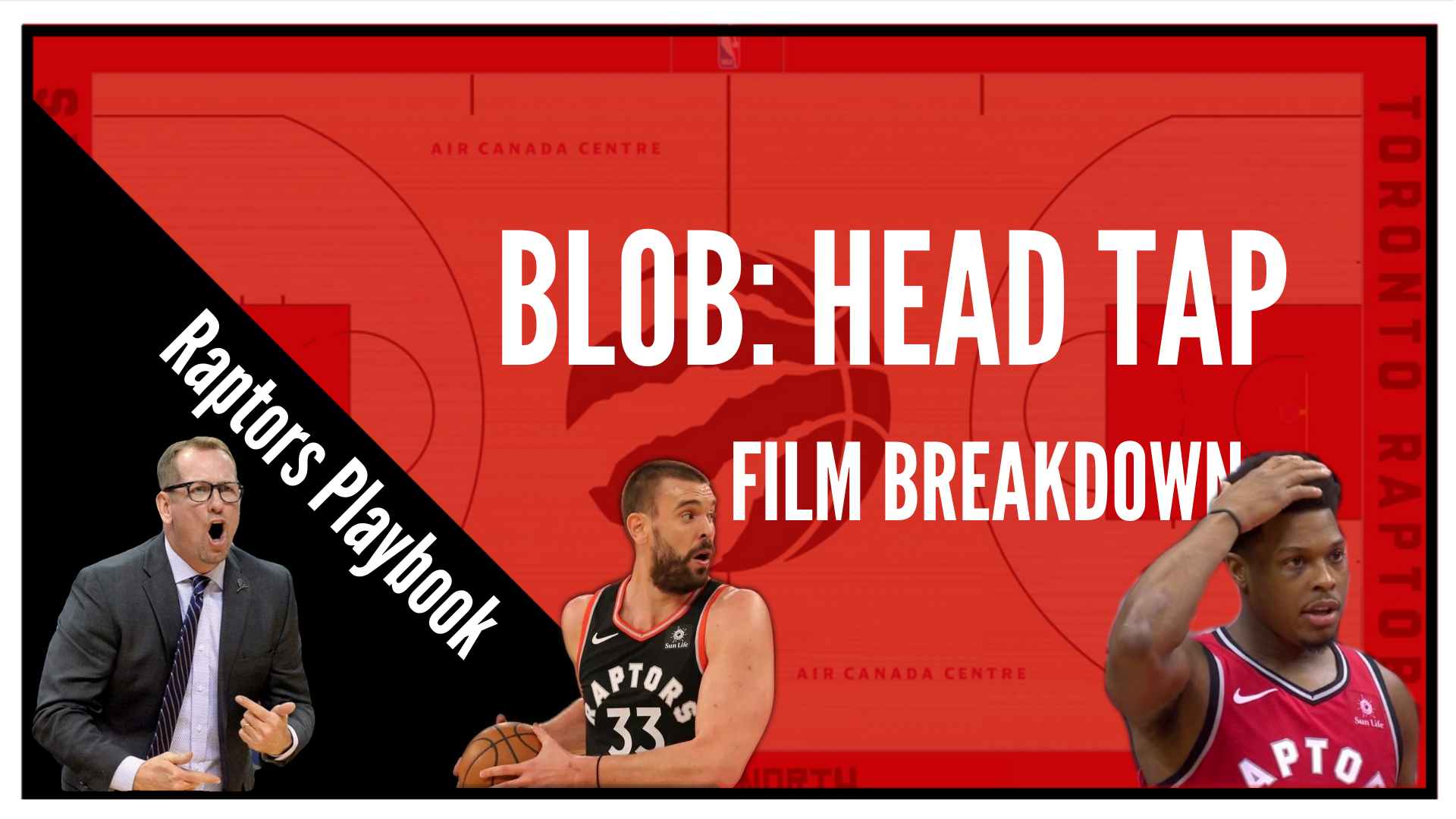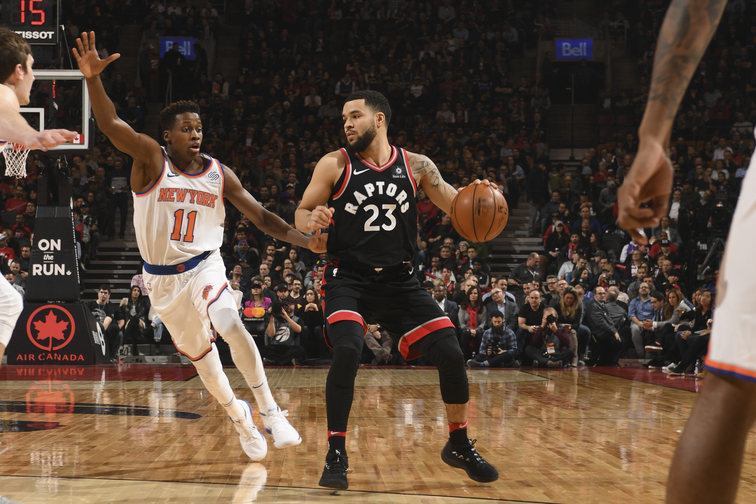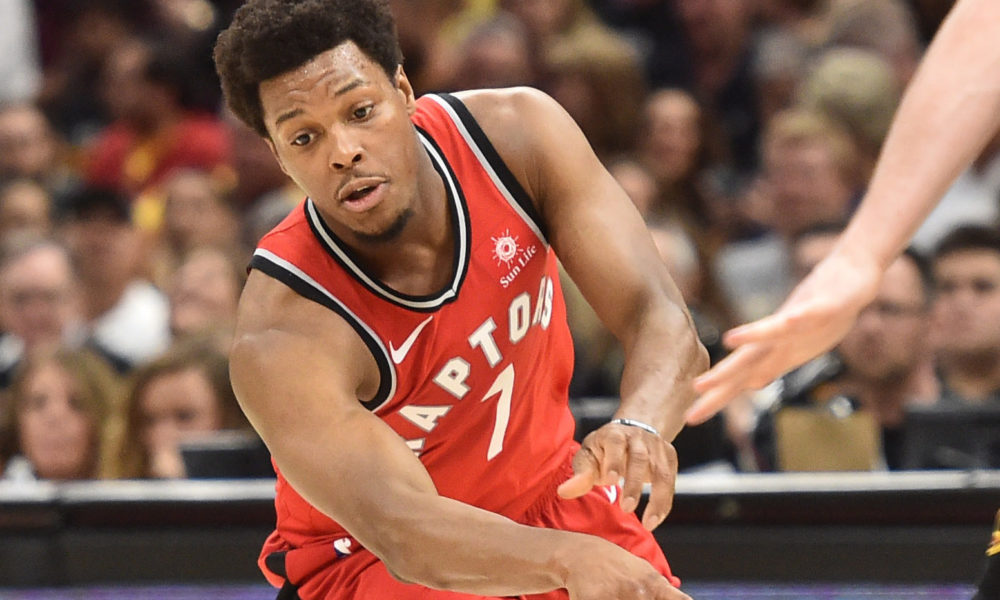Raptors Playbook: BLOB “Head Tap”
Over at the Raptors Playbook YouTube channel (@RaptorsPlaybook on Twitter), I am breaking down the X’s & O’s of the Toronto Raptors. This week, we’ll focus on their BLOB “Head Tap” – a play used in “short clock” baseline out of bounds situations. Watch the video embedded below alongside the summary written, and remember to follow and subscribe to never miss out on a video.
Option 1: Strong Corner Catch – Starting at 0:21
While this first option rarely produces a scoring opportunity, it is important in that it sets up the following action.
This action is simple, in that the player stationed at the free throw line furthest away from the inbounder will cut off the middle player and make a basket cut. Next, the screener will get a screen of their own as they cut towards the inbounder’s corner for a three pointer or catch-and-shoot jumper.
What will allow for this option to work is whether or not the basket cut pulls away a help defender from the second screener. If they are pulled towards the rim, more space is created on the catch for a shot. If not, the play is likely to continue to the next option.
Option 2: Big Pop – Starting at 0:47
In the event that the Strong Corner Catch is not an available option, the Big that set the final screen will pop to the perimeter. The reason this will routinely produce a long closeout that leads to 1) an open catch and shoot jumper for the Big, or 2) a drive to attack the wild closeout, is that the Big’s defender is forced to help out on either the basket cut or the Corner Catch. Helping out on neither is very rare and difficult, and as a result, the Big is momentarily open in an advantageous position above the break.
Option 3: Uphill/Gut DHO- Starting at 1:43
This option is informally a part of the play and is more of a fail-safe, assuming time permits. The ball will either be caught or swung to the big, who engages in an Uphill/Gut DHO with the inbounder. Toronto uses this action in a couple of different plays, but it forces the inbounder’s defender to either trail them as they turn the corner and drive back into the paint, or duck under the DHO and allow the inbounder (Lowry) to pull up for a jumper.




